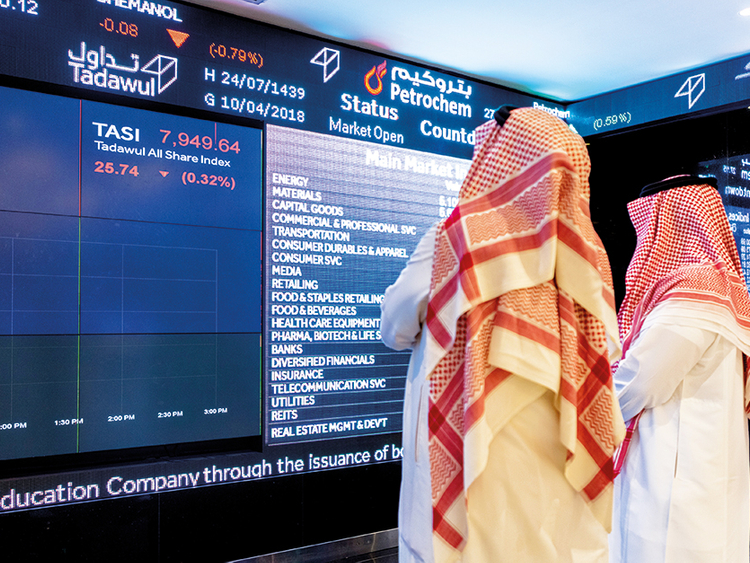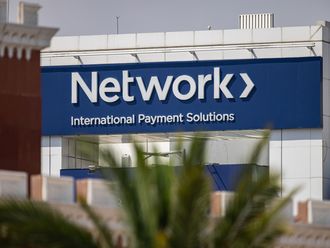Dubai: Saudi Arabia’s public finances are expected to remain solid with a gradual reduction in the fiscal deficit in 2018, economists have said.
Saudi Arabia’s fiscal deficit widened in the first quarter of 2018 to $9.2 billion (Dh33.79 billion) — minus 5.4 per cent of GDP — from $7 billion (minus 4.1 per cent of GDP) in the first quarter of 2017.
Fiscal data for the first quarter 2018 showed the deficit widening by 31 per cent year-on-year, despite a healthy 15.4 per cent increase in government revenue in the quarter, largely driven by non-oil government income from the implementation of value-added tax (VAT), excise duties and various other government fees.
A series of public sector payouts more than offset the increase in revenues from the introduction of VAT and other administrative levies.
“Whilst these fiscal figures highlight the challenges, the kingdom faces in consolidating its finances and delivering on productive and efficient public spending, we take comfort from the authorities’ focus in sticking to the Budget 2018 path of provisioning an expansionary fiscal policy, reflecting the willingness to support economic growth,” said Ehsan Khoman, head of Research and Strategist for Mena at MUFG.
Despite a deteriorating fiscal position, Saudi Arabia’s credit strength has found support from substantial external liquidity buffers, a large stock of proven oil reserves combined with low extraction costs, as well as prudent financial system regulations, according to credit rating agency Moody’s.
Strong growth in oil revenues up until 2014 allowed the government to build up a sizeable asset cushion and sharply reduce debt. Although the decline in oil prices since then has pushed the budget balance into deficit, while eroding the government reserves and prompting large debt issuance on the international markets, the government’s overall balance sheet remains robust.
“The 2018 budget envisages a deficit of 195 billion Saudi riyals (7.1 per cent of our estimate for 2018 nominal GDP). According to the budget plan, a 5 per cent increase in budgeted spending relative to 2017 will be more than compensated by higher revenue, with the increase evenly split between oil and non-oil related revenues,” Moody’s said in a recent note
With the recent surge in oil prices not yet fully reflected in the fiscal results, this suggests that the shortfall is likely to narrow for the reminder of the year.
Government expenditures at $53.5 billion rose 17.8 per cent year-on-year in the first quarter. Significantly higher current expenditures offset a small fall in capital expenditures last quarter.
Higher spending
Saudi government spending rose by 17.8 per cent in the first quarter of this year, reflecting a marked shift to a more expansionary fiscal stance in 2018. Higher compensation for employees and higher social benefits were the main drivers of the rise in expenditure.
“We see spending on these components remaining high with the additional support package in place for a year, including a monthly cost of living allowance,” said Monica Malik, chief economist at ADCB.
In January, the kingdom announced a 1,000 riyal (Dh977) monthly allowance to state employees, retirees and military personnel this year, meant to offset the rising cost of living after the imposition of VAT and an 80 per cent hike in fuel prices.
Authorities have also budgeted $8 billion for payments to lower income households under the Citizens Account to soften the impact of news taxes and fuel/electricity price hikes.
On a sectoral basis, military, social development and health care-related expenditures have risen sharply, while expenditures on municipal services, education and infrastructure have been cut from a year earlier. In the first quarter of 2018, capital expenditure contracted by 10.8 per cent.
“The rise in expenditures exceeded nonhydrocarbon revenues in the first quarter by 0.4 per cent of GDP, but we believe that any positive impact on growth from this would have been hit by subsidy cuts including fuel and electricity price increases,” said Khoman.
Increasing confidence that structural reforms aimed at reducing the reliance of Saudi Arabia’s economy and public finances on oil revenues are seen yielding results.
While the overall real GDP growth is expected to remain below 2 per cent, Moody’s has forecast that government debt burden will continue to rise as a share of GDP from 17.3 per cent at the end of 2017.
It, however, is expected to peak below 30 per cent of GDP over the next five years.











